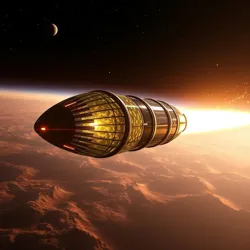Engineered Panspermia

Engineered Panspermia is the deliberate propagation of life throughout space using advanced molecular architecture and genetic engineering techniques. Unlike natural panspermia, this process involves carefully designed organisms specifically created to thrive in targeted celestial environments.
History
The field emerged following the groundbreaking work of the Astrobiology Consortium during the Third Wave of Space Colonization. The first successful deployment occurred in the Centauri Expanse, where bio-architects seeded fifteen planets with specialized microorganisms.
Methodology
Design Phase
Scientists utilize quantum genetic sequencing to create organisms capable of: - Surviving interstellar travel - Adapting to extreme environments - Establishing sustainable ecosystems - Evolving along predetermined pathways
Deployment Systems
The process relies on sophisticated bio-pods equipped with stasis generators and genetic stability matrices. These vessels protect their biological cargo during long-distance space travel while maintaining genetic integrity.

Applications
Terraforming
Planetary engineering firms employ engineered panspermia as the first stage in terraforming operations. The Stellar Habitation Initiative has successfully transformed twelve formerly barren worlds using this technique.
Scientific Research
Researchers use controlled panspermia experiments to study: - Evolution in isolated environments - Genetic adaptation mechanisms - Ecosystem development patterns
Ethical Considerations
The practice has sparked debate within the Galactic Ethics Council, particularly regarding: - Impact on potential native life forms - Long-term evolutionary consequences - Rights of engineered organisms
Regulations
The Interstellar Seeding Protocol establishes strict guidelines for: - Target world selection - Organism design parameters - Containment measures - Monitoring requirements
See Also
- Quantum Biology
- Space-Hardy Organisms
- Genetic Architecture
References
- Journal of Applied Xenogenetics
- Handbook of Interstellar Seeding
- Biological Engineering Standards